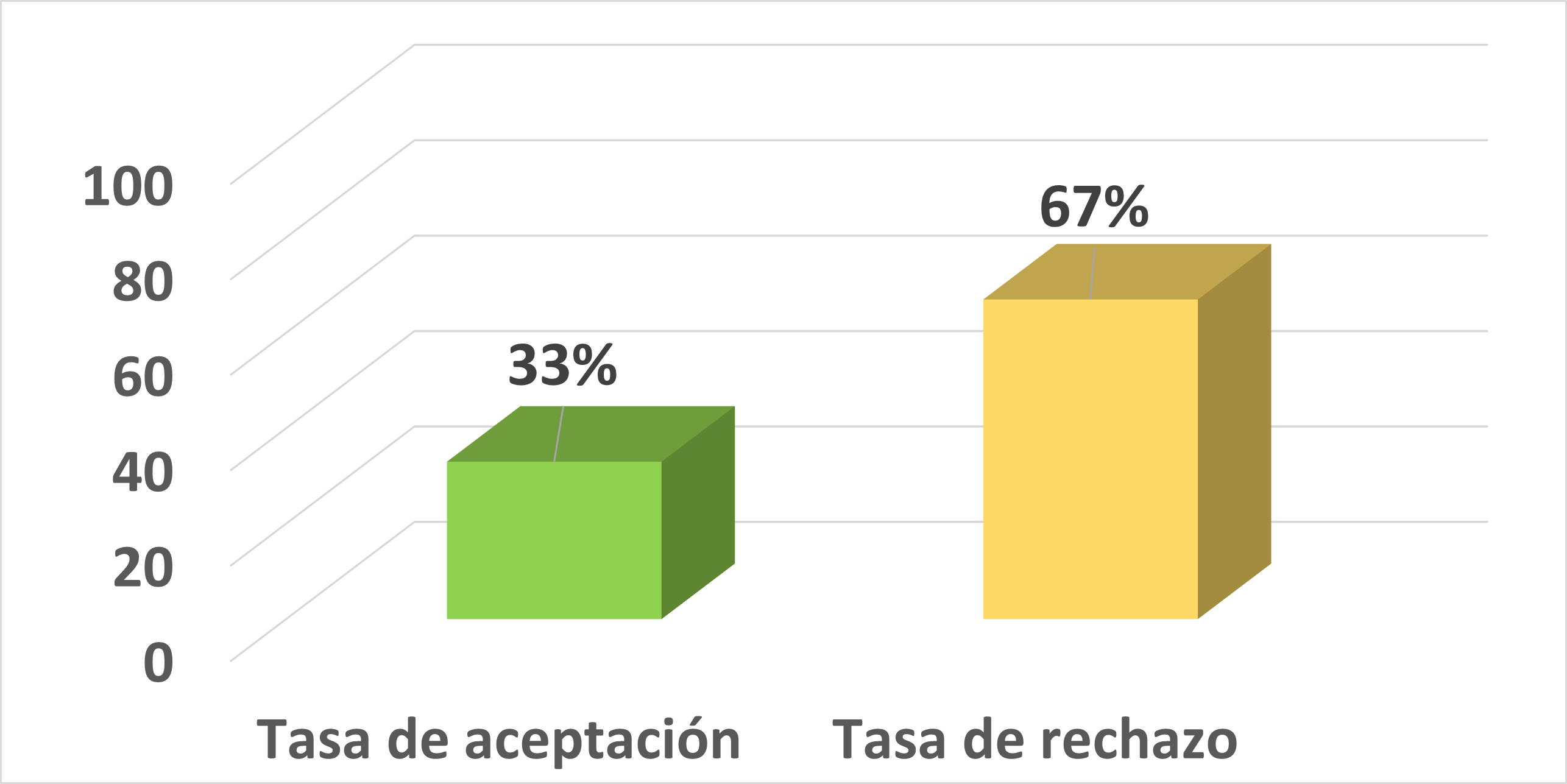Estudio comparativo de métodos de extracción de características y clasificación de potenciales evocados P300
Palabras clave:
Interfaz Cerebro-Computador, BCI, P300, Análisis de Componentes Principales ACP, Transformada Wavelet, LSVM, QSVM, KNN, EEG.Resumen
El presente trabajo tiene por objetivo comparar la precisión en la detección de potenciales evocados P300 de dos tipos de clasificadores: Máquina de Soporte Vectorial MSV y K-vecinos más cercanos (KNN), estos dos clasificadores son entrenados y evaluados con características morfológicas y también con los coeficientes de aproximación de la Transformada Wavelet Discreta. Previo a la etapa de extracción de características se realizó un pre-procesado de la señal de Electroencefalografía (EEG), que incluye el filtrado, eliminación de artefactos, normalización y segmentación. Todo este procedimiento se realizó para muestras con promediado sincronizado de 15 señales de P300 y también para muestras de solo una señal P300. En la parte final del documento se realiza un análisis comparativo de resultados y se propone alternativas que podrían contribuir a una mejora de los porcentajes de precisión de la clasificación en trabajos futuros.Citas
Akram F., S.M. Han & T.S. Kim (2015). An efficient word typing P300-BCI system using a modified T9 interface and random forest classifier. Computers in biology and medicine 56: 30-36.
Alvarado Reyes J. & C.E. Stern Forgach (2010). Un complemento al teorema de Nyquist. Revista mexicana de física E 56(2): 165-171.
Amini Z., V. Abootalebi & M.T. Sadegui (2010). A Comparative Study of Feature Extraction Methods in P300 Detection. Proceedings of the 17th Iranian Conference of Biomedical Engineering (ICBME2010), Teheran.
Anderer P., B. Saletu, H.V. Semlitsch & R.D. Pascual-Marqui (2002). Structural and energetic processes related to P300: LORETA findings in depression and effects of antidepressant drugs. Methods Find Exp Clin Pharmacol 24: 85-91.
Blankertz B., G. Curio & K.R. Müller (2002). Classifying single trial eeg: Towards brain computer. Advances in Neural Information Processing Systems 14(1): 157-164.
Borisoff J., S. Mason, A. Bashashati & G. Birch (2004). Brain-computer interface design for asynchronous control applications: Improvements to the lf-asd asynchronous brain switch. IEEE Transactions on Biomedical Engineering 51(6): 985-992.
Burges C. (1998). A tutorial on support vector machines for pattern recognition. Data Mining Knowledge Discovery 2: 121-167.
Demiralp T., A. Ademoglu, Y. Istefanopulos, C. Başar-Eroglu & E. Başar (2001). Wavelet analysis of oddball P300. Internacional Journal of Psychophysiology 39(1): 221-227.
Donchin E., K. Spencer & R. Wijesinghe (2000). The mental prosthesis: Assesing the speed of a p300-based brain-computer interface. IEEE Transactions on Neural Systems and Rehabilitation Enginering 8(2): 174-179.
Fabiani G., D. McFarland, R. Wolpaw & P. Pfurtscheller (2004). Conversion of eeg activity into cursor movement by brain-computer. IEEE Transactions on Neural Systems and Rehabilitation Enginering 12(3): 331-338.
Farwell L.A. & E. Donchin (1988). Talking off the top of your head: toward a mental prosthesis utilizing event-related brain potentials. Electroencephalography and clinical Neurophysiology 70(6): 510-523.
Friedman J.H. (1997). On bias, variance, 0/1-loss, and the curse-of-dimensionality. Data mining and knowledge discovery 1(1): 55-77.
Frodl-Bauch T., R. Bottlender & U. Hegerl (1999). Neurochemical substrates and neuroanatomical generators of the event-related P300. Neuropsychobiology 40(2): 86-94.
Gao X., D. Xu, M. Cheng & S. Gao (2003). A bci-based environmental controller for the motion-disabled. IEEE Transactions on Neural Systems and Rehabilitation Enginering 11(2): 137-140.
Guger C., S. Daban, E. Sellers, C. Holzner, G. Krausz, R. Carabalona & G. Edlinger (2009). How many people are able to control a P300-based brain–computer interface (BCI)? Neuroscience Letters 462(1): 94-98. Disponible en: http://bnci-horizon-2020.eu/database/data-sets
Gutz L., B. Renneberg, S. Roepke & M. Niedeggen (2015). Neural processing of social participation in borderline personality disorder and social anxiety disorder. Journal of abnormal psychology 124(2): 421-431.
Klem G.H., H.O. Lüders, H.H. Jasper & C. Elger (1999). The ten-twenty electrode system of the International Federation. Electroencephalogr Clin Neurophysiol 52(3): 3-6.
Lotte F., M. Congedo, A. Lécuyer, F. Lamarche & B. Arnaldi (2007). A review of classification algorithms for EEG-based brain–computer interfaces. Journal of Neural Engineering 4(2): 1-14.
Manyakov N., N. Chumerin, A. Combaz & M. Van Hulle (2011). comparison of classification methods for P300 Brain-Computer Interface on disabled subjects. Computational Intelligence and NeuroScience 2011: 519868.
Mirghasemi H., R. Fazel-Rezai & M.B. Shamsollahi (2006). Analysis of P300 Classifiers in Brain Computer Inteface Speller. Proceedings of 28th IEEE EMBS Annual International Conference, New York City.
Perseh B. & A.R. Sharafat (2012). An efficient P300-based BCI using wavelet features and IBPSO-based channel selection. Journal od Medical Signals and Sensor 3(2): 128-143.
Polich J. (1991). P300 in clinical applications: meaning, method, and measurement. American Journal of EEG Technology 31(3): 201-231.
Polich J. & J.R. Criado (2006). Neuropsychology and neuropharmacology of P3a and P3b. International Journal of Psychophysiology 60(2): 172-185.
Polich J. & A. Kok (1995). Cognitive and biological determinants of P300: an integrative review. Biological psychology 41(2): 103-146.
Schlögl A., F. Lee, H. Bischof & G. Pfurtscheller (2005). Characterization of four-class motor imagery eeg data for the bci-competition 2005. Journal of Neural Engineering 2(4): 14-22.
Selim A.E., M.A. Wahed & Y.M. Kadah (2008). Machine Learning methodologies in brain-computer interface systems. Proceedings of the 4th Cairo International Biomedical Engineering Conference, El Cairo.
Descargas
Publicado
Cómo citar
Número
Sección
Licencia
Aquellos autores/as que tengan publicaciones con esta revista, aceptan los términos siguientes:
-
Luego que el artículo científico es aceptado, para su publicación el o la autora aceptan ceder los derechos de la primera publicación a la Revista CEDAMAZ, conservando sus derechos de autor. Se permite la reproducción total o parcial de los textos que se publican siempre y cuando sea sin fines de lucro. Cuando se ejecute la reproducción total o parcial de los artículos científicos aceptados y publicados en la revista CEDAMAZ, se debe citar la fuente completa y la dirección electrónica de la publicación.
-
Los artículos científicos aceptados y publicados en la revista CEDAMAZ pueden ser depositados por los autores de manera integra en cualquier repositorio sin fines comerciales.
-
Los autores no deben distribuir los artículos científicos aceptados, pero que todavía no han sido publicados oficialmente por la revista CEDAMAZ. En el caso de incumplir esta norma implica el rechazo del articulo científico.
- La publicación de su obra, el cuál estará simultáneamente sujeto a la Licencia de reconocimiento de Creative Commons









